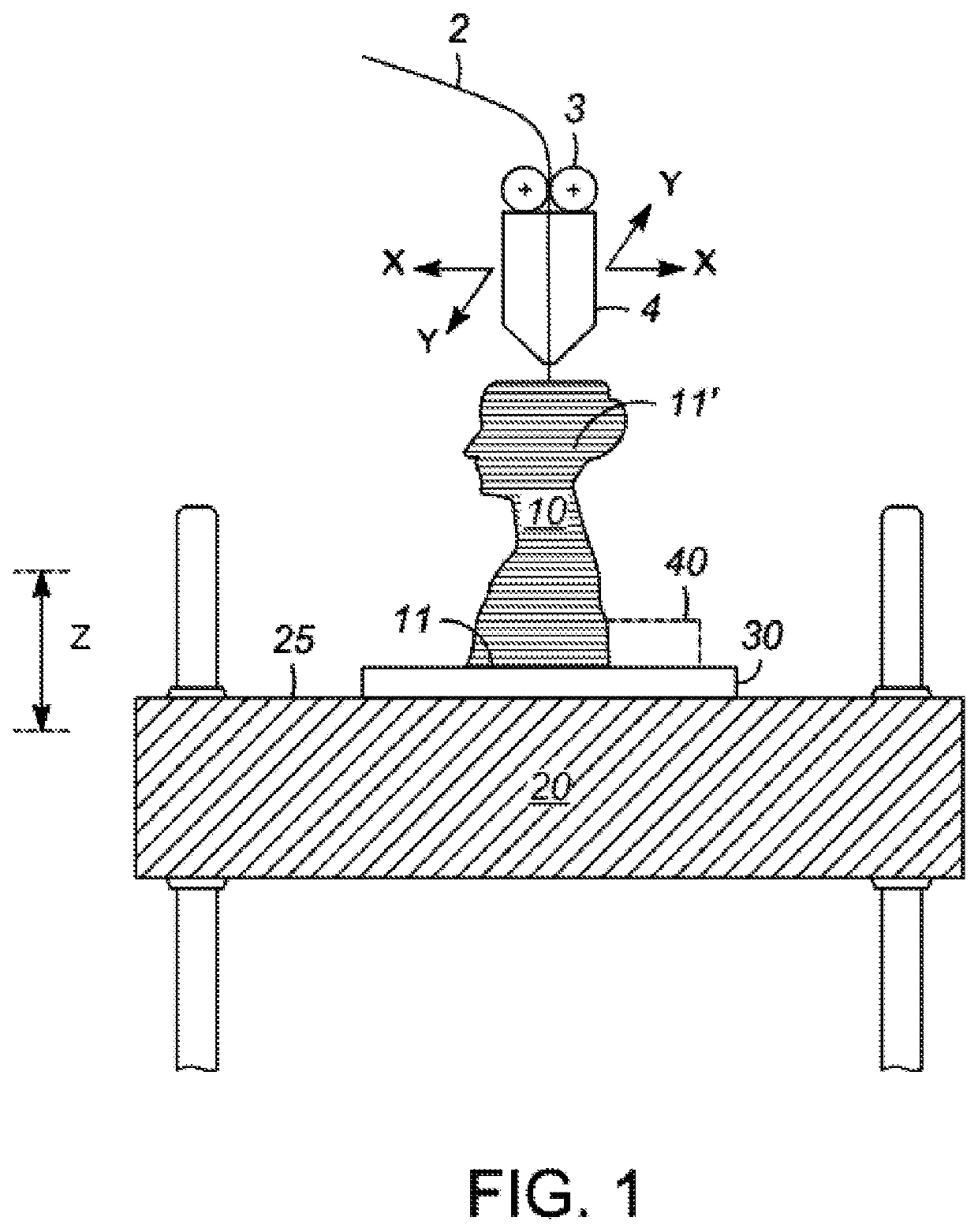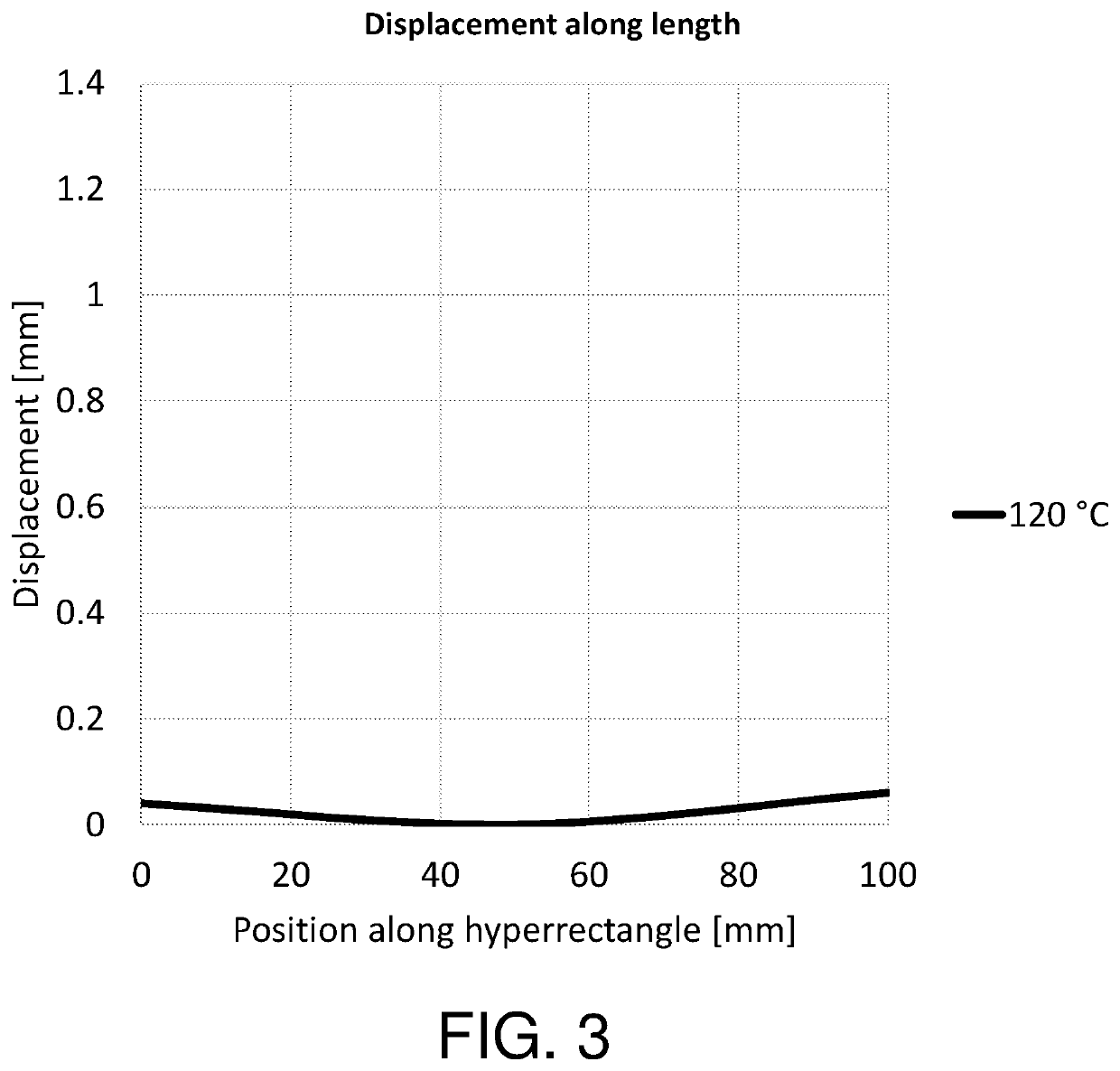Adhesive compositions and their use in 3D printing
- Summary
- Abstract
- Description
- Claims
- Application Information
AI Technical Summary
Benefits of technology
Problems solved by technology
Method used
Image
Examples
examples 1-5
Adhesive Compositions
[0062]Adhesive compositions as described above, and useful in 3D printing methods using FFF, were formed from emulsion polymerization of various monomers, including n-butyl methacrylate (BMA), ethyl methacrylate (EMA), ethyl acrylate (EA), n-butyl acrylate (BA), and methacrylic acid (MAA). The weight percentages of these monomers in the resulting acrylic polymers and other properties of the polymers, namely their Tg (measured by DSC) and Mm (measured by GPC), as well as properties of the compositions, namely acid value, solids content, pH, and Brookfield (dynamic) viscosity at 25° C., are as shown in Table 1 below.
TABLE 1Adhesives for 3D PrintingAcidCompositionValueBMAEMAEABAMMATgMwmgSolidsVisc.Ex.wt. %wt. %wt. %wt. %wt. %° C.kDaKOH / gwt. %pHmPa · s#167.49.623.09015015512.58.735#267.49.623.09015015512.48.730#350.020.010.020.010010013012.59.0#433.79.633.723.04423516012.68.335#59.667.423.01531015512.68.145
[0063]Therefore, it can be seen that acrylic emulsion copoly...
PUM
| Property | Measurement | Unit |
|---|---|---|
| Temperature | aaaaa | aaaaa |
| Temperature | aaaaa | aaaaa |
| Temperature | aaaaa | aaaaa |
Abstract
Description
Claims
Application Information
 Login to View More
Login to View More - R&D
- Intellectual Property
- Life Sciences
- Materials
- Tech Scout
- Unparalleled Data Quality
- Higher Quality Content
- 60% Fewer Hallucinations
Browse by: Latest US Patents, China's latest patents, Technical Efficacy Thesaurus, Application Domain, Technology Topic, Popular Technical Reports.
© 2025 PatSnap. All rights reserved.Legal|Privacy policy|Modern Slavery Act Transparency Statement|Sitemap|About US| Contact US: help@patsnap.com



